Most expert shooters agree that to shoot well, you need to see the sights. A few gifted individuals can hit a relatively close target without using the sights, but those people generally have fired many rounds in practice and have honed point shooting skills. But if the target is small and far away, everyone acknowledges that using sights is a must. This article is not about low light shooting or the argument for using sights though – it’s about seeing them.
There are several different types of sights. In broad terms, they include iron sights, scopes, and red dots. Most handguns use iron sights, and many long guns do also, but to use them well – especially for precision shooting – the shooter must be able to focus on the front sight. And the difficulty in doing so causes problems for many shooters.
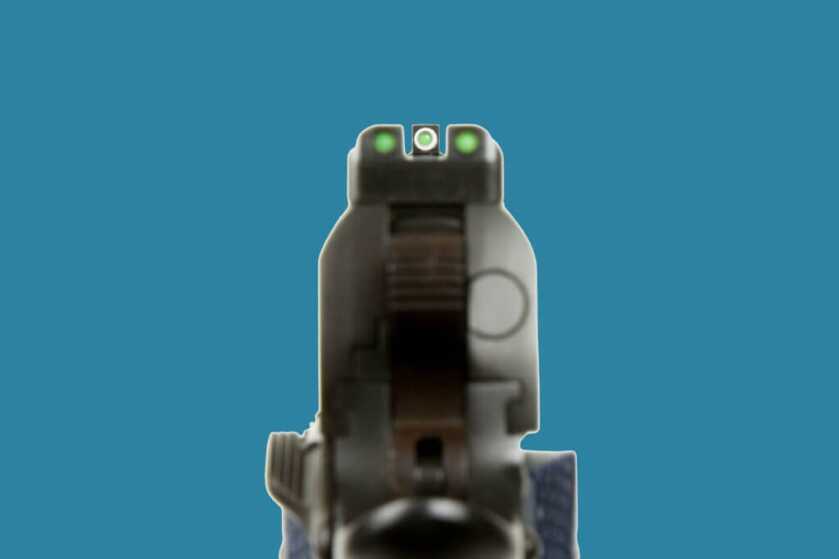
A common condition plaguing many, even those with excellent vision, is called cross dominance. That is a condition where a person’s dominant eye is on the opposite side of the body from the dominant hand. Most shooters naturally shoulder a rifle or grip a pistol using their strong or dominant hand side, but when the dominant eye is on the other side of the body shooting is more difficult.
Most people, but not all, have a dominant eye which is the eye that is stronger and does most of the work. Here’s a simple test to determine which eye is dominant. Hold both hands at arm’s length with the backs of your hands towards your face. Form a triangle with the index fingers and thumbs of both hands. Next, with both eyes open, look at an object a few feet away like a clock on the wall or a doorknob. Then slowly, keeping both eyes open, bring the triangle back towards your face while continuing to focus on the object. The triangle formed by your hands will naturally come to your dominant eye.

Try this the next time you are at the range. Keeping both eyes open and using a handgun, aim at a target using your dominant eye. You may need to shift the gun slightly to one side or the other so that the sights line up in front of your dominant eye, but when done properly, the rear sight, front sight, and target should all be in alignment. Then close your dominant eye. Suddenly, the sights will no longer appear to be lined up with the target and will seem to jump to the side. Then keeping both eyes open, try to aim using your non-dominant eye. It should be difficult because your dominant eye wants to take over. This illustrates the problem and shows why it is important to use the dominant eye for aiming.
The problem happens with long guns, too. If you are right-handed and shoulder the rifle on that side, but have a dominant left eye, you will probably need to close the left eye to use the sights, whether iron sights or a magnified scope. But closing one eye hinders peripheral vision which could be a big problem, especially if you are in a self-defense situation and need to see what is going on around you.
Cross dominance can be dealt with a few ways. The easiest way is to simply close the dominant eye so the non-dominant eye on the strong side of the body is forced to take over. As said before though, peripheral vision is partially lost. Another way to force the non-dominant eye to take over is to blur its vision. Putting a piece of frosty tape on the shooting glass in front of the dominant eye, or smearing a little grease on the lens – lip balm is handy and can be used – allows you to keep the dominant eye open to help preserve peripheral vision, but may hinder the dominant eye’s vision enough to force the non-dominant eye to take over.
Instead of closing the dominant eye or blurring its vision, a black piece of paper can be used to cover the lens to completely block the vision of the dominant eye. Or a lens occluder which is nothing more than a black piece of cardboard or plastic available for purchase some places can be attached to the dominant eye lens. It works the same as a black piece of paper but is made specifically to block vision.
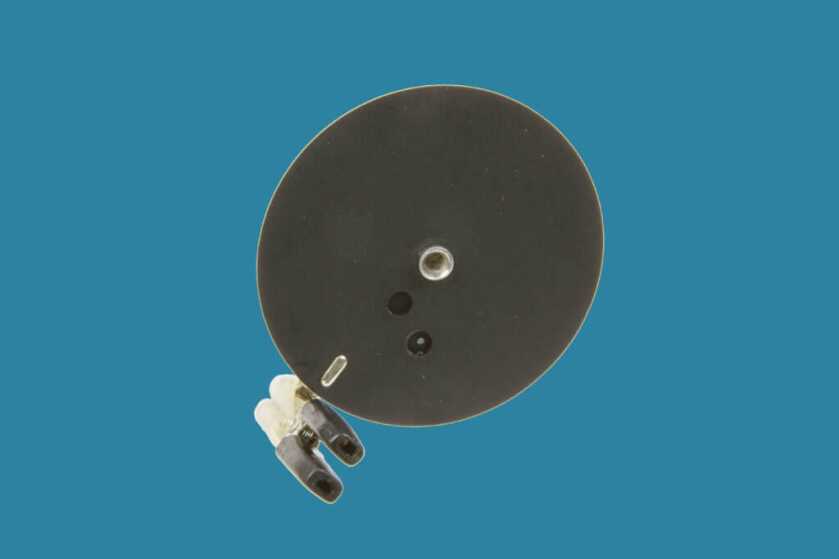
A solution to cross dominance used by some is to shift the gun to the same side as the dominant eye. That’s easy with a handgun, but harder with a long gun. With a handgun, holding the gun the way you normally would in the dominant or strong hand, simply shift the gun slightly to your dominant eye side. If you keep both eyes open, it should be fairly easy to align the sights with your dominant eye and your brain will ignore the non-dominant eye allowing you to focus on the front sight. You might need to tilt your head slightly to get your dominant eye behind the gun, but it probably won’t be by much. It’s really pretty easy to get used to, and with repetition, it becomes natural.
It’s a little tougher to compensate for cross dominance with a long gun, but not impossible. One common way of doing so, and mentioned earlier, is to close your dominant eye while holding the gun on your strong, or dominant, side. Another way is to train yourself to hold the gun on the side of your dominant eye. For example, if you are left-eye dominant but right-handed, shoulder the gun on your left shoulder. At first, it will feel awkward, but with practice, it will become natural. Many people who are cross dominant do this. And it works with both iron sights and magnified scopes. Of course, if you are just starting out as a new shooter, it is going to be easier to get used to using the dominant eye side for shooting. If you are a long-time shooter, it can still be done but will require more work.
It used to be that all scopes had a degree of magnification built-in. It is now possible to get a scope with no magnification, but if your scope is magnified, cross dominance will need to be compensated for. Some people can learn to use the non-dominant eye for magnified scope viewing, but others can’t. With a zero magnification scope though, the shooter can line the gun, scope and target up with the non-dominant eye, and with both eyes open, still use the scope. And this method works for another common sighting device, the non-magnified red dot optic.

Red dot optics – to use the term broadly because some of these devices actually use holography or have a more complicated reticle – generally are not magnified. They are actually very accurate at close to medium ranges and are favored by many shooters who use handguns or long guns for defense or in competition. One advantage red dots offer is speed.

Because of their nature, red dots are easy to use with both eyes open making for fast target acquisition, fast aiming, and good peripheral vision. And because they can be used with both eyes open, cross dominance is not a problem. So if you do not need the ability to aim at small targets at longer distances, a red dot sight is a good option.
A problem affecting many more shooters than cross dominance, regardless of the shooter’s age, is difficulty focusing on the front sight. Expert instructors will emphasize that for accurate shooting with iron sights, it is important to focus on the front sight and let the rear sight and the target appear blurry. If the shooter’s vision is particularly poor, the rear sight and target may seem to disappear, making aiming impossible. There are solutions though.
Everyone is familiar with bifocal eyeglasses. The main portion of the eyeglass lens allows the wearer to see clearly at long or intermediate distances, while a smaller portion of the lens corrects near vision so the wearer can read. The same principle can be used for shooting glasses.
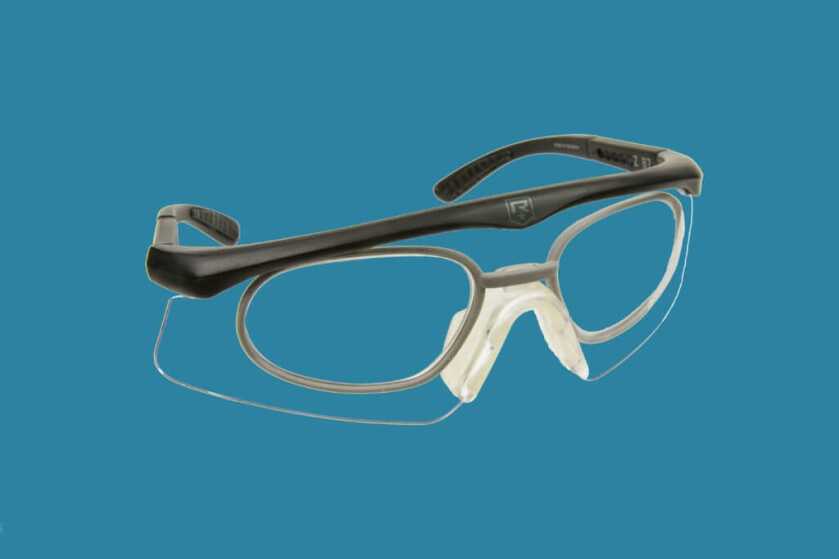
Instead of making the near-vision part of the lens for reading, the focal point – or distance at which objects are in focus – can be set at the distance in front of the eye that the front sight will be. And that part of the lens can be set at the upper part of the glasses instead of the lower part. You may have to search for an eye doctor who will work with you to solve the problem, but even if you can’t bring your gun to the doctor’s office so he can determine the right focal length, you can measure it yourself at home so the doctor can mathematically determine the right prescription. That distance might be different for a handgun and a long gun, but you also might be surprised at how little that difference is. So if the distance is set for one, it still might work for the other.
The only other thing you will need to do if you can’t bring the gun to the doctor’s office is figure out where in your eyeglass lens the near vision portion should be located. Often it is set at the top of the lens so that when the gun is brought up to eye level to aim, the shooter slightly tilts his head down to view the sights. This placement is not that unusual. Eyeglass makers often do this for tradesmen like electricians or auto mechanics who need to view objects overhead.
Make sure your glasses are rated for impact protection. Z87 should be marked on the lenses and frames. Revision Military Ltd. makes shooting glasses that are safety rated and can be fitted with a prescription carrier. The carrier is a frame that snaps into place on the inside of the shooting glasses to hold corrective lenses. Most competent eyeglass labs can make lenses to fit the carrier and position the bifocal where you want them.
If you don’t want to spend the money or time working with an eye doctor to place a bifocal lens in your shooting glasses, you may want to try reading lenses that can be stuck on your shooting glasses. They are small corrective lenses made of soft plastic that adheres to the eyeglass lens and are often used for reading. But they can also be used to bring the front sight into focus and can be placed anywhere on the safety glass lens. Drug stores often carry them and they are an inexpensive alternative to having a bifocal lens made. You may have to experiment to find the right power to bring your front sight into focus though.
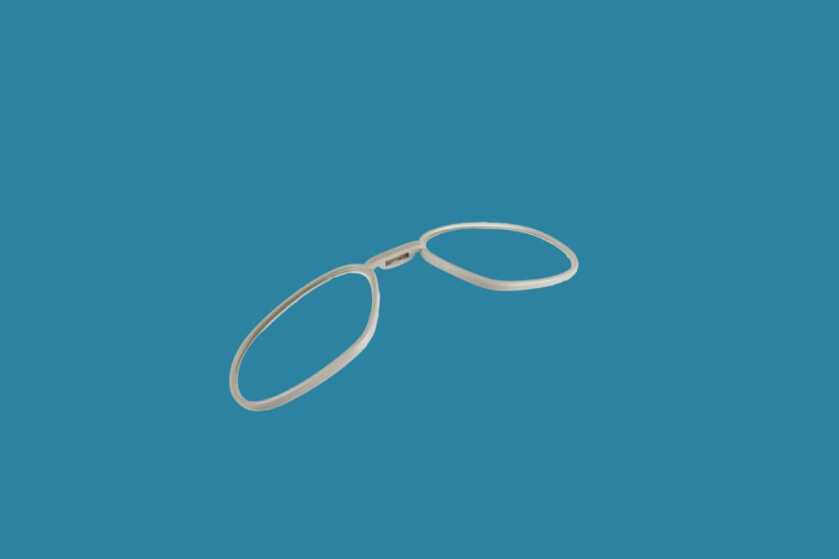
Another aid to correcting focusing difficulties is the use of a small hole through which to view the sights and target. Photographers know that with a smaller aperture, or hole through which light passes and images of objects are captured, the greater the depth of field. The depth of field is the distance from front to back that is in focus when seen through the hole. In other words, if objects three feet to six feet from the front of the hole are in focus with a certain size hole, reducing the size of the hole might make objects from two feet to ten feet appear in focus.
The point is that with a smaller aperture or hole – sometimes called an iris – to view through, the front sight can be easier to focus on and the rear sight, maybe even the target, might come into focus or at least be less blurry. To use this technique, a small peep sight or rear aperture sight can be fitted to the gun, and various sizes are available from Skinner Sights. It used to be that adjustable apertures made by Merit that attached to shooting glasses were available from Brownells, but they are no longer carried.
Another alternative is to punch a small hole in a piece of black paper and affix it to your shooting glasses. Adjust the location and size of the hole until the front sight is in focus. An adjustable iris, cardboard with a hole in it, or an occluder for that matter, are not suitable for self-defense though because they block too much vision and it takes more time to find the target through them.
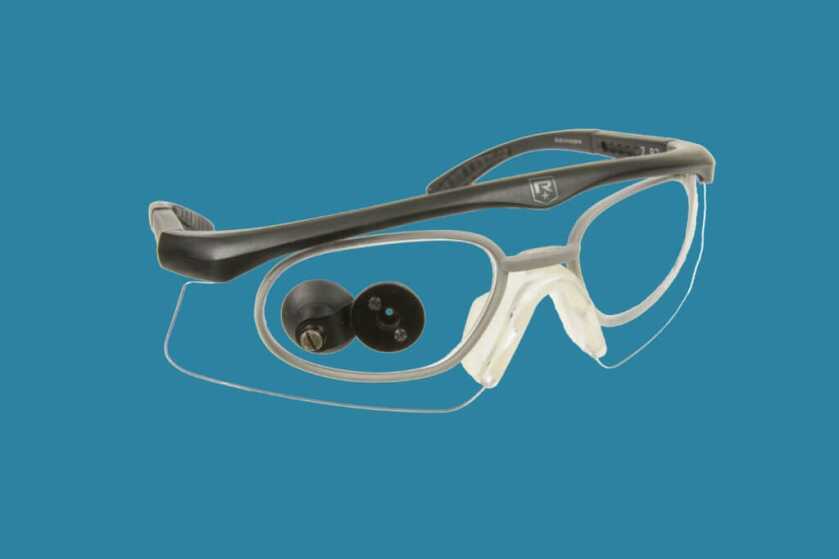
Vision problems have plagued shooters ever since sights were invented. But with the techniques discussed above, a shooter with vision problems can still shoot well.

I’m 55yo and took my (handgun) instructor’s course almost a year ago. While qualifying, I noticed for the first time in my life, I was consistently hitting about 1” high and 1” left of point of aim. When I first started shooting, I would hit low and to the left – usually by more than an inch. Back then it was my trigger pull. I corrected and the problem was solved. I had my instructor run my weapon to see if it was possibly misaligned sights – hey, you never know. He and the weapon were spot on. Back in the classroom, he had me perform the exercise described in the article and I was able to identify another “first” – I have become L eye dominant. I’m still RH dominant and shoot as such. I did have a new prescription for glasses that was (and still is) unfilled. I’m not entirely sure if or how that correlates to my change in eye dominance or my actual performance, but we’ll soon find out. I’m glad it’s a relatively minor change in my performance, but it’s the principle of the thing. I’ve always been able to hit my point of aim at qualifying distances and I’ll be damned if that’s going to change now – someday maybe, but not today. Waiting for my new glasses to be made, then back to the range to figure this out. I’m certainly not ready for the only other option, but I’ve come to the conclusion that this “getting older” thing sucks.
I’ve 55yo and took my (handgun) instructor’s course almost a year ago. While qualifying, I noticed for the first time in my life, I was consistently hitting about 1” high and 1” left of point of aim. When I first started shooting, I would hit low and to the left – usually by more than an inch. Back then it was my trigger pull. I corrected and the problem was solved. I had my instructor run my weapon to see if it was possibly misaligned sights – hey, you never know. He and the weapon were spot on. Back in the classroom, he had me perform the exercise described in the article and I was able to identify another “first” – I have become L eye dominant. I’m still RH dominant and shoot as such. I did have a new prescription for glasses that was (and still is) unfilled. I’m not entirely sure if or how that correlates to my change in eye dominance or my actual performance, but we’ll soon find out. I’m glad it’s a relatively minor change in my performance, but it’s the principle of the thing. I’ve always been able to hit my point of aim at qualifying distances and I’ll be damned if that’s going to change now – someday maybe, but not today. Waiting for my new glasses to be made, then back to the range to figure this out. I’m certainly not ready for the only other option, but I’ve come to the conclusion that this “getting older” thing sucks.
At 63, after 40 years of law enforcement, my bifocals are now a pain. These are good suggestions, my bifocal close vision area is the bottom of lens, forcing me to lift my head high enough to be on the same plane as the sights. I’m gonna try and use the side of the slide as an aming device instead of the head lift.
Excellent article! Now if I can just locate my glasses… hahaha!
I’ve been “cross-sighting” handguns for over 30 years. It took a little practice but, it feels completely natural. Now, when I draw and push, the sights are aligned with my dominant eye and on target. One of my favorite sayings is “don’t practice until you get it right, practice until you can’t get it wrong”. Using a rifle or carbine, for medium to long range, I close my dominant eye but, for close range I use what’s called the “triangulation method”. The best way to describe it is, keeping the barrel parallel to the ground while you look over the sights and point at your target. Lining your index finger up with the barrel and, “pointing” at your target also helps. It’s possible to put two rounds center mass at 25 meters using the “controlled pair” method or a “double tap” closer than that..
I extend my pistol to it’s normal shooting position, tilt the barrel slightly up. Focus on the front sight then slowly lower it into the right position and alignment. It takes less than a second to do so, but infinitely easier to focus on the front sight for 67 year old eyes.
Very timely article. There are many of us aging boomers not shooting as much simply over the issue of eyes.
Grow the gun culture: please expand on more solutions and alternatives to giving up target shooting.
Well written. Very useful for myself as a beginner.
Great article. I am cross eye dominate and shoot a handgun exactly how you explained it in your article. Well done.
Thanks Doug, a most interesting and helpful article. I never realized I had a dominant eye. been wondering why I have been all over the target with my Hellcat.
Ain’t it Nifty Be’n 50???
Ahhh – nope…
I’ve found I have developed the opposite problem for many shooters…as my eyes have aged from 20/10 vision of the past to WTF…I’ve noticed that white dot sites and tritium cause a “Halo-glow” on the sight picture that causes blurring of alignment of the front blade inside the rear notch hampering accuracy. I’ve had to resort to blackening the dots to go back to old-school and found that improved my sight picture significantly…especially at the indoor range with their back-lighting on lanes…
I’ve found this getting older thing to generally suck – not that I’m ready to rush the alternative mind you. I’m 55 yo and got my (handgun) instructor’s certification last year. During range qualification I found myself hitting consistently 1” high and 1” left of my point of aim for the first time in my life. When I started shooting, I was hitting low and left (over an inch too), but that was determined to be due to my trigger-pull. I corrected my pull and never had any additional issues. My instructor had me perform the exercise described in the article and I discovered another first – as my vision has changed, I have become L eye dominant instead of R eye dominant as I’ve always been. He surmised that since I’m RH dominant and my eye dominance has switched it’s affecting my shots. Not sure if, how or why, but I have a new prescription (glasses) and as soon as they’re ready, back to the range to fix this problem. It’s not a major change in performance, but it’s the principle – I’ve always been able to hit my point of aim at qualifying distances and I’m not ready for that to change – someday maybe, but not today.
Please edit your definitions. SIGHT ALIGNMENT is what you show in your article. SIGHT PICTURE adds in the target, which is not shown.
As to determining eye dominance, some people seem to have difficulty using your method (also the one preferred by the NRA.) There is another method shown by USA Archery caned “The ink Method,” and it’s easier. Stick your thumb up at arm’s length and cover a distant object. Now close one eye, and then the other. If the thumb doesn’t move when the object is covered, that’s your dominant eye. If the thumb “jumps” off of the object, that’s your non-dominant eye.j
I replaced my black on black revolver sights, with the exact same tritium type shown above. Gun manufacturers need to start doing this! Paying big bucks for a bear protection revolver and then having to change out the cheap black on black sights is not acceptable (Ruger)…The Marlin lever 45-70 I own has Skinner peep sights, the front sight has a white stripe, this will not work in the snow. I painted over the white with an orange fluorescent marker…every little bit helps.
Great article and very well written, thanks!
Good information and very useful suggestions for range work. For self defense with a rifle or pistol those preparations/devices may not be available. As one of those older shooters, I find that sight ear/blade color and design/shape can make a big difference in getting an accurate sight picture even when the sights are a bit blurry. Black front and back sights are fairly difficult to use compared with sights with distinct colors on the sight ears/blade. It makes it much easier to overcome blurry focus. Fiber optic fiber sights make sight and target alignment easier for old eyes. Shape of the sight where you can have an open area between the rear ears and front blade also make it easier to get the point of aim on the target. I use sight paint on most sights to give them visibility and it is the least expensive aid I have found. Many of the newer firearms with colors on the ears/blades make a night and day difference in getting the firearm on target for us older shooters. I would appreciate a follow-on article to address what shooters can do to their existing sights to increase accuracy. Thanks, Bob